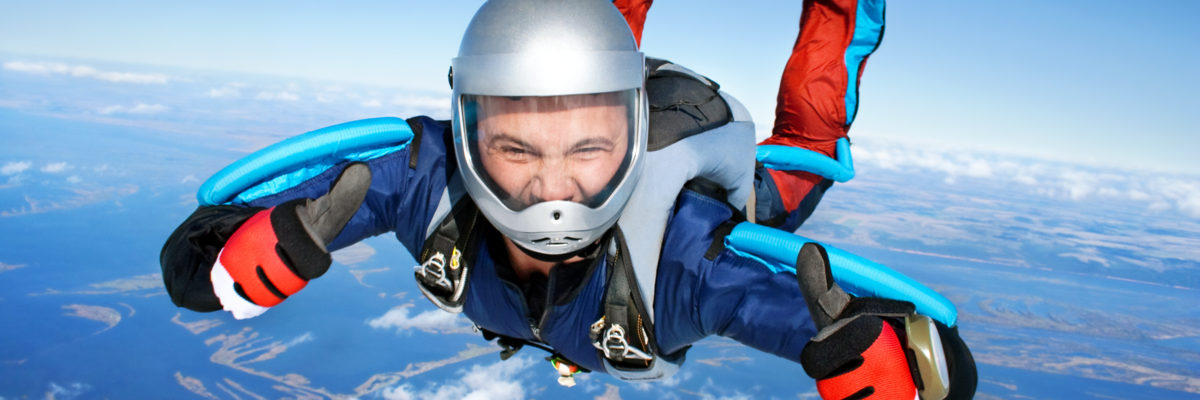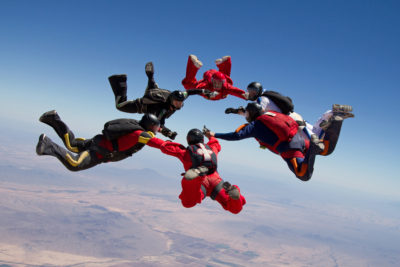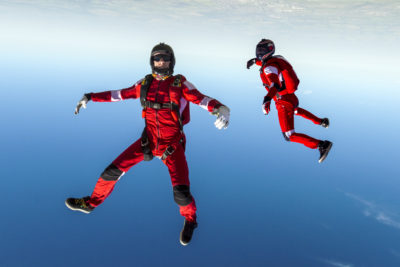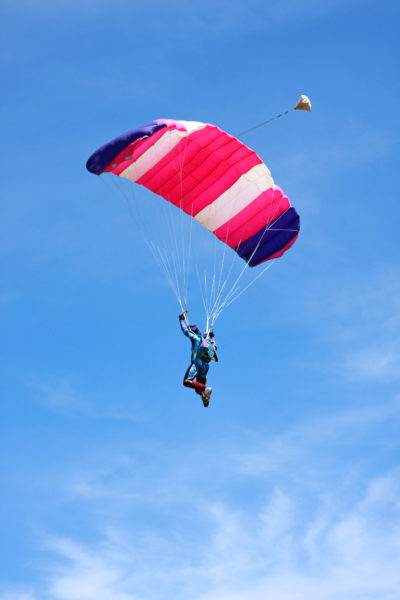- Michigan's Premier Skydiving Center
- Call Now: (517) 423-7720

Skydiving Disciplines: It’s Not All The Same
Saturday, April 1, 2017
- Skydive Tecumseh
- 4/01/17
- 0
- Blog, General
Getting into skydiving as a hobby starts as you might expect – with lessons and a series of jumps to hone your skills. Once that’s done, a whole world of opportunity awaits. Skydiving is far more than ‘just falling’. Here we explain the difference between the various skydiving disciplines.
Becoming A Belly Flyer
The first port of call for newly qualified skydivers is to work on their belly flying (also know as ‘flat flying’) skills. This is where you fall belly to earth and is the position you learn during your skydiving course. 
Becoming a proficient belly flyer takes a lot of practice. The initial goal is to be able to fall stable and control your movement – fast fall, slow fall, side to side, forward and backward. Skydivers can even learn to move across the sky at speed in a maneuver known as ‘tracking’ that enables them to separate from one another before opening their parachutes. All of this is part of belly flying.
Progression as a belly flyer means learning to fly with other people. The most popular discipline within belly flight is ‘4-way formation skydiving’. This is a high-speed discipline where flyers compete to perform set shapes (or formations) within a given time frame – usually 35 seconds. Each shape is a point and the team with the most points wins.
There’s also 8-way formation skydiving, which is similar to 4 way but with different shapes and with 8 people, meaning different skills are required. There’s also big-way formation skydiving, which can be anything from 9 to hundreds of people flying together, usually with the aim of making just one or two shapes rather than as many as possible.
Becoming A Freeflyer
Freeflying is the term for any form of body flight that is not belly to earth. Freeflyers fly in all sorts of positions including sit (seated in the air as if in a chair), stand (stood upright in the air), head down (upside down), and much more in between.
Freeflyers also practice tracking, but the aim of their track is less about gaining separation and more about covering the most distance by reaching a steeper angle and therefore, by the rule of aerodynamics, moving more quickly across the sky.
Freeflying is often seen as less disciplined than belly flying. This is because freeflyers can choose to jump without a plan and simply fly in proximity with one another or jump using a ‘tube’ which gives them a reference point to fly around.
That said, there are more disciplined versions of freeflying too. VFS (vertical formation skydiving) is like 4-way formation skydiving but the flyers are all head up or head down. It’s a very advanced form of skydiving and takes years of practice. There are also dynamic freeflyers, who compete by performing set routines and free routines. Then there’s freestyle – a form of freeflying akin to gymnastics, but in the air.
Becoming A CRW Dog
CRW stands for ‘canopy relative work’ and is all about flying your parachute with others. For CRW dogs (the name given to those who practice CRW), freefall is unnecessary and they usually jump from a lower altitude than freefallers and open their parachutes straight out the door.
CRW jumps are thrilling to watch because they are much slower than freefall work and, due to their lower altitude, can often be seen from the ground too.
You’ll re-learn a lot of your canopy flying skills if you choose to take up CRW. That’s because you’ll be flying in very close proximity with other people and putting your hands and feet into their lines to hold you together.
There’s usually a pilot within a CRW ‘stack’ who is in control of the direction of flight for all the canopies attached below them. The other pilots in the stack need to keep themselves in the right configuration. In competition, CRW jumpers swap places with one another to perform required formations, scoring points for each one.
CRW equipment is different to that used in freefall, so to get started, you may need to borrow or invest in different gear.
Becoming A Swooper
 Swooping is the name given to high-speed, high-performance landings on your parachute.
Swooping is the name given to high-speed, high-performance landings on your parachute.
Swooping is an advanced skill and takes years of learning and practice. You should never try swooping without the proper instruction.
Swoopers will often, like CRW jumpers, bypass freefall and open their parachutes straight out the door. They control their parachute to put it into a spiral which is wider at the top than it is at the bottom, building up speed throughout. This speed is then carried across the ground, resulting in swoopers traveling much further on landing and usually giving a ‘swoosh’ noise in the canopy as they come in.
Swooping can be done just for fun at the end of the jump. There are also swooping competitions that revolve around speed, distance, or accuracy.
If you’re interested in finding out more about the skydiving disciplines available to you, speak to your instructor at Skydive Tecumseh and we’ll get you a coach and the lessons you need. If you’re yet to try skydiving and want to know more about getting into it, check out our skydiving courses.

Skydiving for the first time at Skydive Tecumseh was by far one of the greatest experiences of my life. No matter how high maintenance I was before the jump when I was scared, every single jumper employee did everything they could to make my experience unforgettable. I have already recommended here for many of my friends wanting to go with me for their first time on my next round!
Christine Kardel
Copyright © 2025, Skydive Tecumseh, All Rights Reserved.
DropZone Web Design & Marketing by Beyond Marketing, LLC